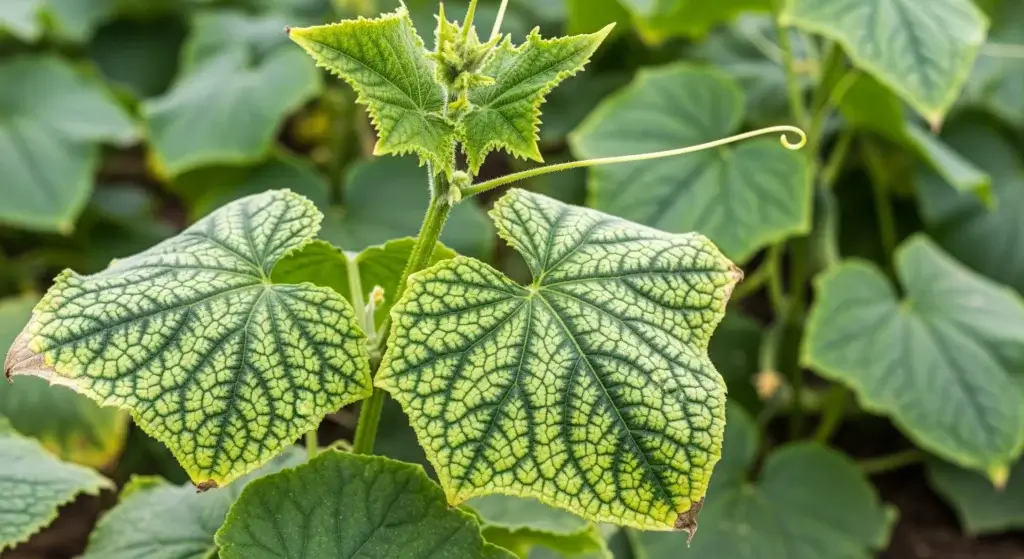
Beetroot is awesome—sweet, earthy, and totally worth the dirt under your nails. But powdery mildew? Not so awesome.
It shows up as white fuzz on the leaves and messes with your harvest.
This guide breaks it down: what causes it, how to stop it, and what you can spray (organic or not) to kick it out of your garden.
Whether you go natural or use a store-bought fix, you’ll learn how to keep your beets healthy and your harvest strong.
Understanding the Enemy: What is Beetroot Powdery Mildew?
Before you fight it, know what you’re dealing with.
Powdery mildew isn’t just one fungus—it’s a group.
On beetroot, the main troublemaker is Erysiphe betae, which specifically targets plants in the beet family.
What does it looks like?
- White powdery spots – Starts small, then spreads across leaves, stems, even leaf stalks.
- Curled or twisted leaves – Infected leaves can look weird and warped.
- Yellow to brown patches – As mildew grows, it turns leaves sickly.
- Dry, dead leaves – Eventually, they shrivel up and die.
- Slow growth – The powder blocks sunlight, so the plant makes less energy.
- Weak beets – Smaller, less tasty roots.
- Early bolting – In bad cases, plants try to flower too soon.
What Makes It Show Up?
- High humidity, but dry leaves – Weird, right? It likes moist air but doesn’t need wet surfaces.
- Crowded plants – Not enough airflow means spores spread easier.
- Mild temps – Grows best between 18–27°C (65–80°F).
- Too much shade – Less sunlight = more humidity = mildew party.

Stop Powdery Mildew Before It Starts: Smart Growing Habits
Want to keep powdery mildew off your beets? Start with good habits.
These easy moves make your garden way less inviting for fungus.
Pick the right spot
- Full sun – Beets need 6–8 hours of sunlight a day. Sunlight dries leaves and keeps mildew in check.
- Give them space – Don’t crowd your plants. Follow spacing rules on the seed packet so air can flow and keep things dry.
Water smart
- Water the soil, not the leaves – Use drip lines or soak the base. No leaf baths.
- Morning is best – If you have to water overhead, do it early so leaves dry before nightfall.
Build healthy soil
- Good drainage – Wet, soggy soil stresses plants and makes them easy targets.
- Don’t overfeed – Too much nitrogen = soft, lush leaves that mildew loves. Use balanced fertilizer and compost.
Choose wisely
Pick resistant beet varieties – Some types are less likely to get sick.
Check seed catalogs or ask your local nursery what’s best.
Keep it clean
- Cut off sick leaves fast – Remove infected parts and toss them in the trash (not compost).
- Pull weeds – Weeds crowd your beets and trap moisture.
- Rotate your crops – Switch up where you plant each year to keep disease cycles from sticking around.
Early Intervention: Organic and Homemade Remedies for Mildew
Caught powdery mildew early? Good. You can fight it with stuff that’s garden-friendly and DIY-approved.
These work best when sprayed right on the fungus—don’t just mist and hope.
Neem oil
How it works: Neem messes with the fungus’s life cycle.
- How to use: Mix 1–2 tablespoons neem oil per gallon of water + a few drops of mild soap. Spray all over—especially under the leaves.
- When to use: Great as a weekly spray or when you first spot signs. Reapply every 7–14 days or after rain.
Baking soda or potassium bicarbonate
- How it works: Changes leaf pH so mildew can’t grow.
- Recipe: 1 tablespoon baking soda or potassium bicarbonate + 1 gallon of water + 1 teaspoon mild soap.
- Tip: Spray everything, but test a small patch first—baking soda can burn leaves if overdone. Use for prevention or light infections.
Milk spray
- How it works: Science is still figuring it out, but it’s believed milk + sun zaps mildew with free radicals or helps the plant fight back.
- Recipe: 1 part milk (skim is less stinky) + 9 parts water.
- How to use: Spray weekly on sunny days. Smells weird, but it works.
Sulfur dust or spray
- How it works: Stops mildew spores from sprouting.
- How to use: Follow the label. Comes as a powder or mixable spray.
- Warning: Don’t use when it’s hotter than 32°C (90°F). It can fry your plants.
Horticultural oils
- How it works: These oils smother mildew spores.
- How to use: Mix as directed. Spray evenly, covering both sides of the leaves.
- Warning: Don’t spray on hot days or stressed plants.

When to Reach for Fungicides: Chemical Solutions
If your beet patch looks like it’s been dusted in flour and nothing else is working, it might be time to go chemical.
Just do it smart and safe.
Before you spray anything
- Read the label – Seriously. It tells you how much to use, when to use it, and how long to wait before harvesting (that’s the PHI).
- Gear up – Gloves, long sleeves, goggles—whatever the label says, wear it.
- Stick to the rules – Don’t wing it. Follow the schedule and dose exactly.
Fungicide options (when you need the big guns)
1. DMIs / Triazoles (systemic fungicides)
- What’s inside: Myclobutanil (like Spectracide Immunox or Ortho MAX).
- How it works: Gets into the plant and protects new growth. Messes with the fungus’s cell walls.
- Why use it: It’s both a shield and a sword—prevents and treats.
2. Strobilurins
- What’s inside: Azoxystrobin (Scotts DiseaseEX, Heritage).
- How it works: Stops the fungus from breathing (literally). Moves across leaf surfaces and sometimes inside.
- Why use it: Covers a wide range of fungi and helps before and during an outbreak.
3. Chlorothalonil (Contact Fungicide)
- What’s inside: Found in Daconil.
- How it works: Sits on the surface and blocks spores from growing. Doesn’t enter the plant.
- Why use it: Good for serious mildew pressure.
- Heads-up: Washes off in rain. Needs reapplying more often.
4. Copper-Based Sprays
- What’s inside: Copper sulfate or copper hydroxide.
- How it works: A surface treatment that zaps a bunch of fungi and bacteria.
- Why use it: Works well and is often labeled “organic.”
- Caution: Can burn plants in hot, humid weather.
Rotate, rotate, rotate
Fungus is sneaky. If you use the same spray too often, it might stop working.
- Check the FRAC group on the label (kind of like the spray’s family name).
- Switch it up between sprays from different FRAC groups.
- Don’t ditch the basics – Always pair fungicides with good garden habits and organic treatments.
Application Best Practices for Fungicides
If you’re gonna spray, spray smart. Fungicides only help if you apply them the right way—don’t just spritz and hope.
Spray at the right time
- Hit your plants early morning or late evening when it’s cool and there’s no wind.
- Avoid the heat of the day—spray won’t stick, and wind can blow it everywhere but where you want it.
Cover everything
- Spray all over, especially under the leaves—that’s mildew’s favorite hiding spot.
- Don’t stop ‘til you see a little runoff. You want full coverage, not a light mist.
Reapply like clockwork
- Read the label and stick to the schedule.
- Miss a dose, and mildew might bounce back stronger.
Stay safe
- Wear your gear—gloves, long sleeves, eye protection.
- Keep kids and pets away until the spray dries. No exceptions.
Respect the PHI
- That’s the Pre-Harvest Interval—the number of days you have to wait before picking your beets.
- Always follow it, so you’re not eating chemical salad.

Integrated Pest Management (IPM): The Holistic Approach
Want to win the long game against beetroot powdery mildew? Use IPM—Integrated Pest Management.
It’s like having a game plan instead of just reacting when things go wrong.
You mix prevention, early action, and smart backup moves. Here’s how:
1. Start with prevention
Give your beets full sun, good airflow, and water at the base. Mildew hates dry leaves and spaced-out plants.
2. Keep watch
Check your plants often. Catch the white fuzz early before it spreads like gossip in a high school hallway.
3. Go organic first
If you spot a little mildew, hit it with neem oil, baking soda spray, or milk. No need to bring out the big guns yet.
4. Use fungicides last
If things get out of hand, then—and only then—go for chemical sprays. Follow the label, switch products between uses (so fungi don’t adapt), and stay safe.
5. Keep monitoring
Watch what works and what doesn’t. Adjust as you go. Mildew doesn’t take breaks—neither should you.
Final Take: Beat the Mildew, Save the Beets
Powdery mildew might be annoying, but it doesn’t have to ruin your beet harvest.
Know what triggers it, use smart growing habits to keep it away, and act fast if it shows up.
Start with prevention, try organic sprays if needed, and only reach for fungicides when things get bad.
Use IPM—mixing clean habits, early action, and smart treatment—for long-term success.
Stay sharp, stay consistent, and your beets will crush it. Happy growing!



